Offshore sailing is his passion
Published on July 18th, 2022
Fifteen year old Timothey Szczepanski recently completed the 2022 Newport Bermuda Race in the Gibbs Hill Lighthouse Division, which was his first oceanic race. As crew on a modified Farr 40, he was the youngest to start in this division. He shares his story in this report:
I was born in France but left some 10 years ago to move, first to Atlanta, and subsequently to Boston. I’ve been reading Scuttlebutt for a couple of years now and it’s been one of the many ways I maintain my passion for sailing.
The sport of sailing was introduced to me at the age of 5 by my father. Before having ever set foot on a boat, I remember being impressed by his ability to singlehand Hobie 15 catamarans, and was curious about this activity. It’s on the same Hobie 15s that I took my first sailing steps almost 10 years ago.
Quickly, I always wanted to return to the beach to sail again, and I began sailing a Hobie Catsy on my own. After moving, during summer break, we returned to France and I was reunited with the sailing club and its catamarans which I took out every day.
My arrival in Boston marked an important turn in my relationship with sailing. I could now sail 420s and Sonars every weekend at a nearby sailing center, which I took advantage of as much as I could. It allowed me to begin logging many hours on the water and gain experience in all types of conditions.
The Vendée Globe 2012 was my first encounter with offshore sailing, and each day I watched the videos sent from on board the IMOCA 60s. I distinctly remember the incessant howl of the wind, the endless horizon meeting the gray or blue sky, and in great detail, perhaps because it was the first retirement that brought me back to the reality of the Vendée Globe, the video of Vincent Riou showing the damages to his boat after hitting a drifting buoy.
I continued sailing dinghies each weekend and catamarans in the summer until the Vendée Globe 2016. Then, I took control of my own IMOCA through Virtual Regatta and followed the racing very closely, the duel between Alex Thomson and Armel Le Cléac’h, the race within the race of Jean-Pierre Dick, Yann Eliès, and Jean Le Cam, along with the countless ocean stories. At the finish and Armel’s victory, I was convinced: offshore sailing was my passion.
For two years, I continued my intensive practice of sailing and following the races, which I did in part by reading the Scuttlebutt website. I had the chance to go to the Newport stopover of the Volvo Ocean Race 2017-18 where I met sailors such as Charles Caudrelier, Dee Caffari, and Peter Burling. Since French is my first language, I even had a conversation with Dongfeng Race Team principal Bruno Dubois!
This proximity to the competitors made the offshore sailing dream seem possible. Thus, I decided to take key steps in progressing in sailing. In the summer of 2019, I attended the famous camp Les Glénans in Brittany, France where I spent some of my most memorable sailing moments. I’m still in touch with those I met there (one of them is now a 29er world champion!).
That September, at 13 years of age, I began my own 29er training with Richard Feeny in Bristol, RI. He is still my coach today. I made great progress during the fall and many races were scheduled in the spring before they were canceled by the COVID pandemic’s early days.
After a less frequent practice during the times at which the epidemic was at its highest, I once again contacted my coach. He then revealed that he was halting 29er activity to replace it with a summer program in Figaro 2, a legendary retired offshore one-design singlehanded boat!
My surprise was great upon seeing these mythical boats so far from their homeland. They still bore the traces of marks made by skippers all over the boat and the stamps of numerous races on the sails. This program was made possible thanks to Rich Wilson who founded an organization, COSC, which bought about 15 Figaros to “train the next generation of offshore sailors”.
That summer, I realized my ambition of beginning offshore sailing. I trained intensively multiple times a week and we sailed overnight each weekend. Those were some of my best sailing moments, from runs bombing under spinnaker, entire nights spent awake at the helm under the silent stars, or other ones, memorable for their… uncanny nature.
I could mention the numerous “wakeup calls” made with the alarm used by solo sailors, which I can attest is mightily powerful, or the night where nobody on board could spot the buoy we were looking for, such that we ended up mistaking it for a lighthouse which was the cause of a couple of panicked gybes once the rocks shot out from the darkness.
At the end of the 2021 summer, we had planned to do the Ida Lewis Distance Race (115 nm) but we learned it was canceled due to Hurricane Henri as we were motoring to the start. Nevertheless, we replaced it with the 235 nm Vineyard Race, a unique experience of 40 sleepless hours.
I celebrated my birthday on the day of the start, which the race organizers decided to announce at the awards ceremony; I lost count of the number of sailors who came up to me to wish me a happy birthday and ask how such a young person was racing offshore!
After a few more overnight deliveries, winter set, and I worked tirelessly for my college applications as I impatiently awaited springtime.
This brings me to early June, when, I left for Oakcliff Sailing, where I lived and trained each day until the start of the 2022 Bermuda Race. With experienced sailors such as Dawn Riley and passionate racers surrounding me, it was the perfect place to prepare myself.
The day after my arrival, we took the start of the 185 nm Block Island Race. Our boat hadn’t been sailed for the past two years and had just been put in the water two weeks before. Thus, we were rushing to prepare the boat and amend the toll of a few years of sitting around.
Only three hours before the start of the race, our electrical circuit was shorted, frying our alternator and burning its wiring harness. In a display of extraordinary resourcefulness, we rushed to clear the burnt equipment from the engine, managed to start it, and devised a way to carry multiple batteries during the race. We switched them as they ran out.
After motoring and nearly missing our start, we sailed into the night relieved to be racing. Around Block Island, we encountered gusts up to 55 knots and later the next day, a violent squall. The race, in which we ultimately beat the other two Farr 40s entered, stood as a baptism by fire for our boat – Oakcliff Farr 40 Gray – and our newly formed team.
Over the next few weeks, we delivered the boat to Newport, conducted extensive electrical work to replace our lost wind sensor and alternator system, and planned our own supplies to take to Bermuda.
The New York Yacht Club Annual Regatta was the last test for our boat, equipment, and crew, all of which proved to be race-ready. For three days, we raced inshore among Maxis 72s and other impressive carbon machines.
Thus, on June 17th, we headed out into the Newport channel and took the start of the Newport-Bermuda Race. We chose a western option which would give us deeper angles allowing us to surf waves with our spinnaker up. After a hectic start, delayed by a thunderstorm, and a beautiful first night on a beam reach, we put up our A2, unintentionally grinding our halyard into the mast.
It became stuck into the mast, tore our spinnaker, and mocked us from 50-feet above; we could do nothing at that time to retrieve it. Without the ability to use the spinnakers we banked on, we were suddenly disadvantaged by the deep angles. Undeterred, we brushed this thought away and pushed hard to maintain good average speeds, often surfing over 15 knots of boatspeed with a top speed of 22.8 knots!
Our Gulf Stream crossing saw us hit favorable currents up to 3.5 knots and we gybed across to make the most of it while avoiding a squall line. Once the waves had eased and the winds died down to 15 knots, we were able to recover our spinnaker halyard just before sunset. What a relief, we would have kites (spinnakers) for the lighter air!
But soon came the call, “All hands on deck!” We had set the A4, and not more than 5 minutes later the clew had broken, and we nursed the sail into its bag. To maintain pace, we unfurled our Code 0, which carried us through a sleepless night of riding shifts. The sun rose for the third and final time to a beautiful 12 knots on calm seas.
Once the wind shifted back, we put up our A1.5. We were not going to let anything happen to that sail, and we actively trimmed it for the entire day. After sunset, Bermuda’s lights began to show as a haze, and more boats popped up on the AIS. The breeze was twitchy and undecided, but we had made 150 miles that day and were only 35 miles from the finish.
And then came a loud pop when our A1.5 tore right down the luff. Tired, we just wanted to get to the finish as fast as possible, so we sent up our Code 0 once again, which would complain from sailing so deep in the lighter winds which had eased to 10 knots. But at 0354, we passed the St David’s Lighthouse, took our sails down, and watched the sun rise on the island.
Pretzel sticks kept us awake until we reached our slip and finally touched the ground, 635 nm away from Newport. Despite sail tears impeding our competitive hopes, we were fueled by a healthy dose of determination, freeze-dried beef stew, energy bars, and good spirits which got us safely to Bermuda; the race was a success!
We spent a few days in Bermuda, sightseeing the much faster boats on the neighboring docks (a 70ft trimaran here, 68ft mini-Maxi there…) and exploring the island. Four of us remained for the return delivery, and after six days of managing a high-pressure system, some motoring on flat seas, and encountering an unforecasted cold front bringing 30-35 knots of wind on a close reach, we reached New York City, and finally Oakcliff Sailing in Oyster Bay, NY.
During my time at Oakcliff, I’ve already learned a lot more about boatbuilding, making repairs, preparation, engine and electrical work, and the work it takes to run a racing program. I find the technical side of racing just as interesting as the sailing itself, and it fits in well with my decision to study engineering in college.
My offshore schedule this summer includes the Bayview-Mackinac and the Chicago-Mackinac on a Farr 400, and in the future, I am working on building a Mini Transat project in the prototype class, and I dream of sailing a Class40 to better understand the boat on which I hope I will progress to the IMOCA class.
I recently finished my Baccalaureate exams (I skipped two grades which is a whole other story in and of itself) and before going off to college to study engineering, I am taking a gap year, during which I plan, among other things, to race more offshore and gain more experience doublehanded and solo.


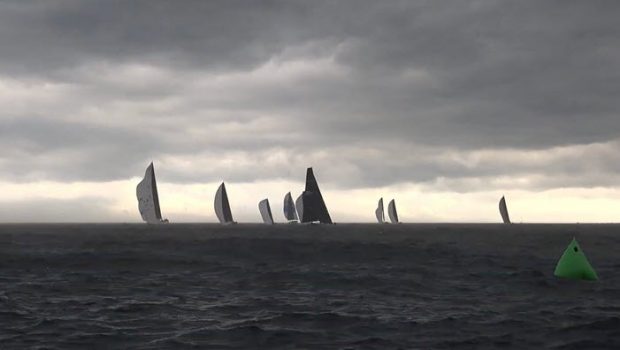


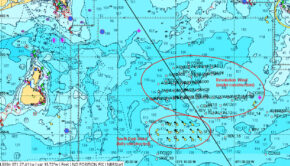
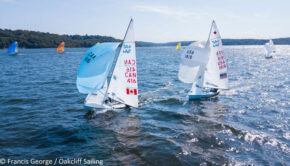
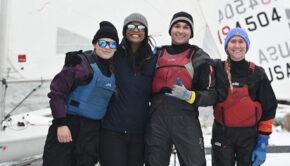
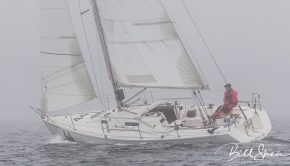
 We’ll keep your information safe.
We’ll keep your information safe.